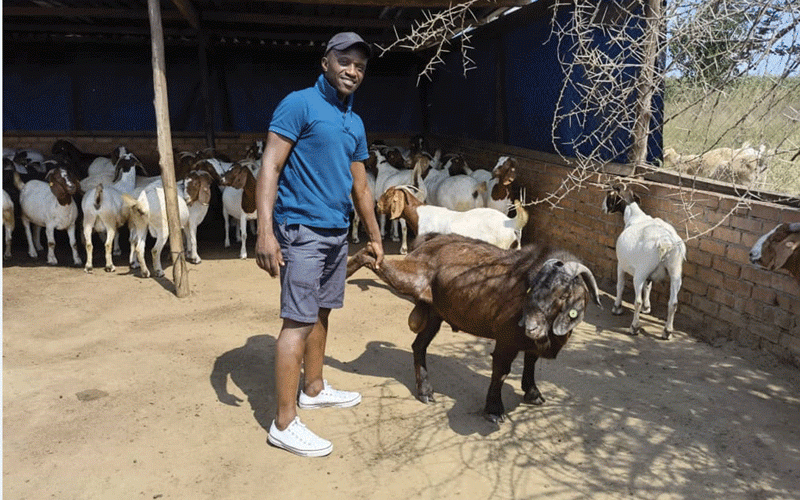
DESPITE the El Niño-induced drought that has seen livestock farmers lose a large number of their livestock due to shortage of pastures, it’s a different story for Michview Enterprises, as business is booming.
Michview Enterprises is a goat farming company headquartered in Bulawayo, mainly focusing on growing, breeding and selling Boer goats.
Their farm, which houses 110 female stud Boer and Kalahari Red goats, as well as five bucks (male) goats, is situated 25km outside Bulawayo along the Matopos Road.
Many farmers have lost their livestock due to lack of rainfall, especially in the country’s Region 5.
A 50kg bag of cattle feed goes for US$19, which is too expensive for many people.
However, it’s a different case for Michview, who have seen this opportunity as a game-changer.
Lindani Ncube, the director for Michview Enterprises, said despite the chaotic conditions, his business has thrived, labelling it a game-changer.
“Reflecting on our recent experiences, I can say that goat farming has been a game-changer for us,” he said.
- LSU livestock project funds looted: Audit
- LSU vice-chancellor sucked in cattle procurement scandal
- It’s no longer business as usual
- Michview Enterprises finds opportunity in adversity through goat farming
Keep Reading
“Despite the chaotic and challenging climatic conditions, our goat farming has thrived.
“In fact, I firmly believe that goat farming is the best option for farmers in our country.”
At Michview, they formulate their own feed to minimise the cost of commercial feed by mixing various trees, which costs US$25 per 50kg bag.
Goats consume approximately 30% of their body weight per day, making them efficient and cost-effective to feed.
They are relatively easier to breed compared to cattle, which reduces the overall workload and expenses.
“Our experience during the recent drought season has been particularly remarkable. While many farmers struggled to keep their cattle alive, our goats not only survived, but actually thrived,” Ncube said.
“We didn’t lose a single goat and our farm continued to generate income. To top it all, goat prices have been significantly higher than those of cattle.”
According to Ncube, a single Boer buck can go for US$800.
In some parts of Matabeleland South province, one can buy a cow for just US$250 during the drought period, as farmers would prefer to get a small amount of money from their livestock rather than losing it through death.
Ncube said he has never been a cattle farmer and is grateful for the success Michview has achieved with goats.
“Our story serves as a testament to the viability and sustainability of goat farming, which I believe is one of the top 21st century farming practices,” he said.
“With its numerous benefits and relatively low maintenance, I highly recommend that farmers in our country consider transitioning to goat farming.”






